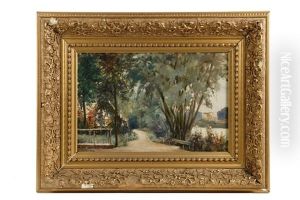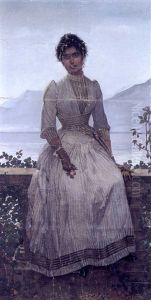William Barbotin Paintings
William Barbotin was a French sculptor and painter born on August 29, 1865, in Nantes, France. He is recognized for his contributions to the Beaux-Arts movement and is particularly noted for his sculptural works. Despite not being widely known outside of France, Barbotin made significant contributions to the art world during his lifetime, and his works were exhibited in various salons and galleries.
Barbotin studied at the École des Beaux-Arts in Paris, where he was a pupil of the famed sculptor and teacher Alexandre Falguière. Under Falguière's tutelage, Barbotin honed his skills and developed a classical style that paid homage to the traditions of French sculpture, while also incorporating his own unique sensibilities. His sculptures often depicted allegorical subjects, historical figures, and mythological themes, and they were characterized by their expressive detail and dynamic form.
In addition to sculpture, Barbotin was also proficient in painting, although his sculptural works are more prominently recognized. His artistic career was marked by his participation in the Salon des Artistes Français, an annual art show in Paris where he exhibited his works and gained accolades. His sculptures were well received, and he was awarded several medals for his contributions to French art.
Barbotin's works can be found in various public collections and locations in France, including monuments and decorative elements on buildings. His public commissions testify to his skill and the esteem in which he was held during his career. His artistic legacy is preserved through these works, which continue to be appreciated for their craftsmanship and artistic merit.
William Barbotin's life was dedicated to the pursuit of artistic excellence, and he continued to create and exhibit his works until his death on December 2, 1931, in Paris. Although he may not be as well-known as some of his contemporaries, his work remains an important part of the narrative of French art history, reflecting the tastes and styles of the late 19th and early 20th centuries.


